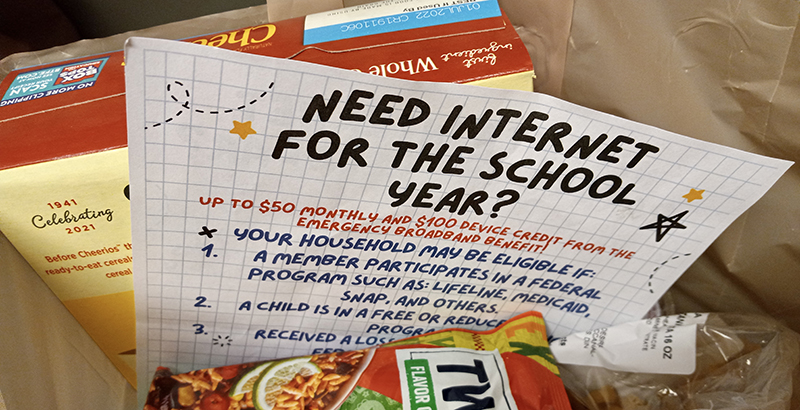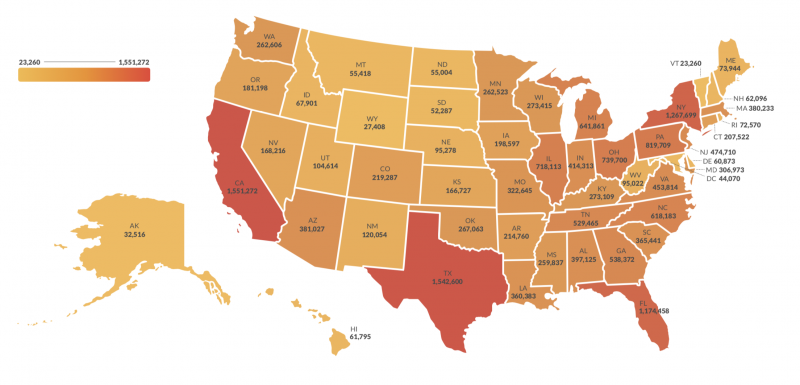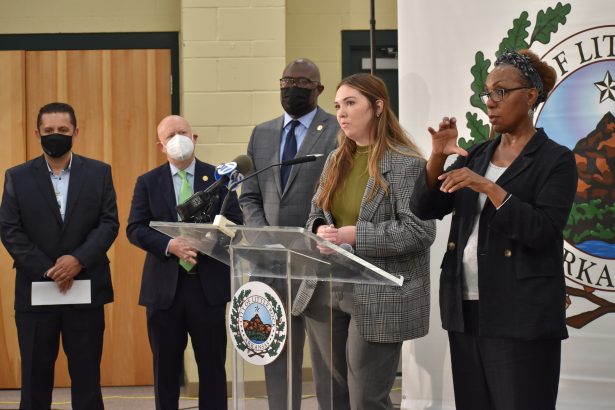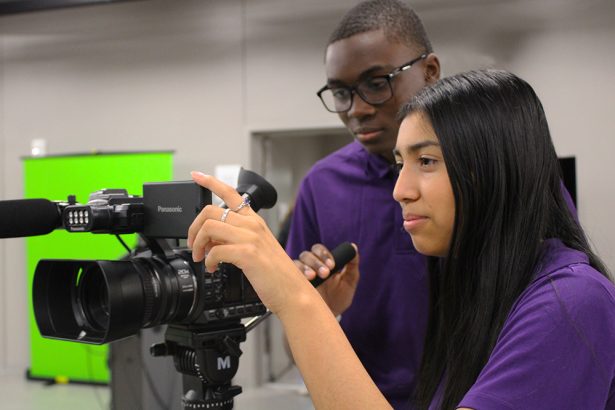‘Not a Pipe Dream’: New Report Offers Roadmap to Eliminate Internet Affordability Gap for Students

Get stories like this delivered straight to your inbox. Sign up for The 74 Newsletter
Almost two years into the pandemic, over 18 million households lack high-speed internet access. Even if it’s available, they can’t afford it, according to a new report released Thursday from nonprofit EducationSuperHighway.
CEO Evan Marwell estimates about half of those families include school-age children.
“The narrative is that it’s been about building infrastructure in rural America,” Marwell said, but added, “after decades of investment, affordability is now the biggest problem.”
In 43 states, the inability to pay for internet service accounts for more than half of the digital divide — even in those with large rural populations, according to the report, entitled “No Home Left Offline.”
Congress included a $7.1 billion Emergency Broadband Benefit in the American Rescue Plan last March, but less than 17 percent of eligible households have signed up, the report said. A lack of awareness of the program, skepticism over whether the benefit will actually cover internet costs and confusing enrollment procedures are the primary obstacles to participation, the authors note.

The “No Home Left Offline” map shows the number of households in each state affected by the broadband affordability gap. (EducationSuperHighway)
Since the start of the pandemic, millions of students have missed out on learning because of insufficient internet access because they lack stable or strong-enough connections to complete tests, upload assignments and interact with teachers and classmates over Zoom. Problems with technology are among the reasons for high absenteeism rates among remote learners, an issue that has persisted this year with students in quarantine. Experts say states and communities need strong and targeted marketing campaigns to get wary families to take advantage of free and discounted programs.
The report comes as the $1.2 trillion infrastructure package — which includes $65 billion for broadband — awaits a vote in the House. The bill renames the benefit the Affordable Connectivity Fund and allocates $14.2 billion to make it permanent.
‘Can’t rely on volunteers’
The federal benefit program primarily serves existing customers who have faced economic setbacks because of the pandemic — not those who have never subscribed to an internet provider, according to the report. That’s why it’s important, Marwell said, to have staff dedicated to getting students connected.
“One of the big takeaways from the pandemic is you can’t rely on volunteers,” he said. “You need paid staff, and you need really specific data about who you are trying to sign up.”
In Little Rock, Arkansas, Maddie Long is already doing that work.
On a break from finishing her master’s in Indigineous studies at the University of Kansas, she was working as a landscaper in Little Rock when she saw the opening for an American Connections Corps fellow. Heartland Forward, a think tank focusing on the needs of states in the middle of the country, is funding the position to help reduce the digital divide.

Maddie Long, at the podium, works in Little Rock, Arkansas, to help families apply for the federal broadband benefit. Mayor Frank Scott Jr., to her left, announced the new initiative at the end of September.
Now Long attends community events, such as a recent vaccination clinic at the Guatemalan consulate, to talk to those who qualify and provide flyers about the program for the Little Rock School District to stuff in food pantry bags for families.
Parents, she said, are sometimes resistant because they’ve heard the benefit will run out when the pandemic is over (That’s true unless the infrastructure bill passes). The program also includes a one-time $100 credit toward a device, but participants have to get it through their internet provider, which may not be participating in that part of the program
“I don’t think that was set up in the most user-friendly manner,” she said. “Every federal benefit has its own challenges.”
‘A real turn-off’
The Los Angeles Unified School District is trying another strategy — using the federal Emergency Connectivity Fund, another part of the American Rescue Plan, to pay for students’ at-home internet service.
Tanya Ortiz Franklin, a Los Angeles school board member, said that while many internet providers launched discounted programs last year, parents would get turned down because of previous late payments or faced increased costs after trial periods.
“That was a real turn-off to a lot of high need families,” she said.
The district was inspired by a pilot program, run by the nonprofit Partnership for Los Angeles Schools, that serves over 400 families in three low-income communities in the city. The district has now received responses from 22,000 parents who want to participate in the larger, districtwide program, when the contract is finalized, Franklin said. While the district promotes the Emergency Broadband Benefit, she doubts many families are participating.
“It’s another layer,” she said. “A lot of these things are super well-intentioned, but the implementation requires so much social work.”
Students who often put up with dropped connections, broken devices or maxed-out wireless plans are also speaking out about improving access to Wi-Fi.
“People talk about it, but nothing really gets done,” said Marylin Terrazas, an 11th grader at Travis High School near Houston. She’s among the Fort Bend Independent School District students producing and moderating a live Nov. 17 broadcast organized by Connected Nation, a nonprofit focused on eliminating the digital divide. “I thought this was a great way to spread the word that there are people who need help,” she said.

Fort Bend Independent School District students Tahj Spencer, left, and Marylin Terrazas will moderate a live broadcast event this month on the impact of the digital divide. (Joey Dyrud-Lange)
Joey Dyrud-Lange, the district’s media production teacher, said lower-income students with parents and grandparents who “aren’t necessarily the most educated on technology” are especially at a disadvantage.
“I saw a huge gap in learning [last year], and it’s not the students’ fault,” she said. “They go to extreme lengths on their cell phones to try to access their learning.”
The EducationSuperHighway report recommends “broadband adoption centers,” staffed with employees who can help parents enroll in the benefit program. Under the infrastructure bill, the broadband subsidy would drop from $50 a month to $30. With many internet companies already offering low-cost programs for $10 to $15 a month, that’s more than enough, Marwell said, for companies to not only cover their costs but offer faster internet speeds and even make a profit.
“They’re going to look at this and say, ‘Now, we have 18 million potential customers. We need to build a business plan to get these people signed up,’” Marwell said. “The idea that we can do this is not a pipe dream.”
Get stories like these delivered straight to your inbox. Sign up for The 74 Newsletter

;)
